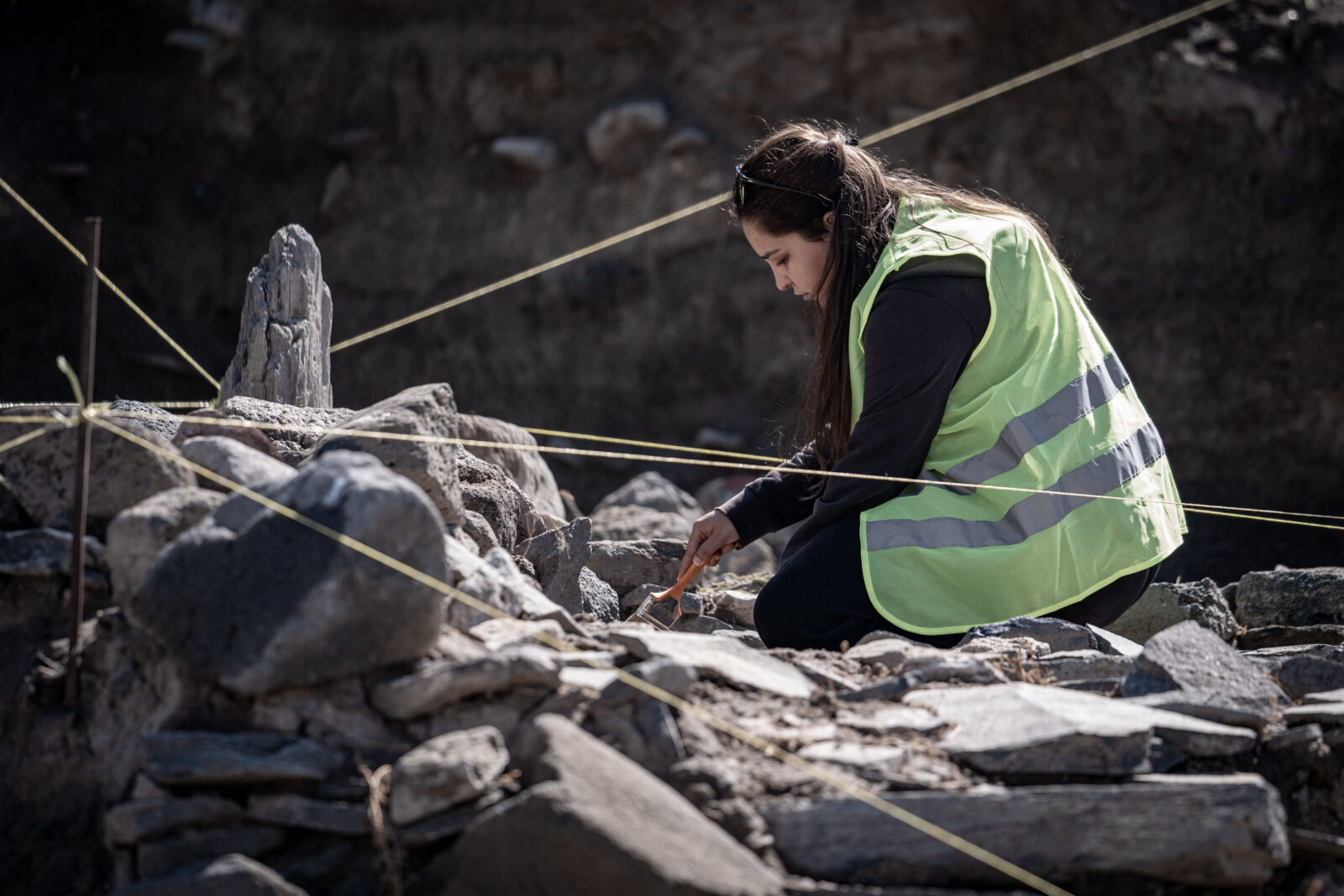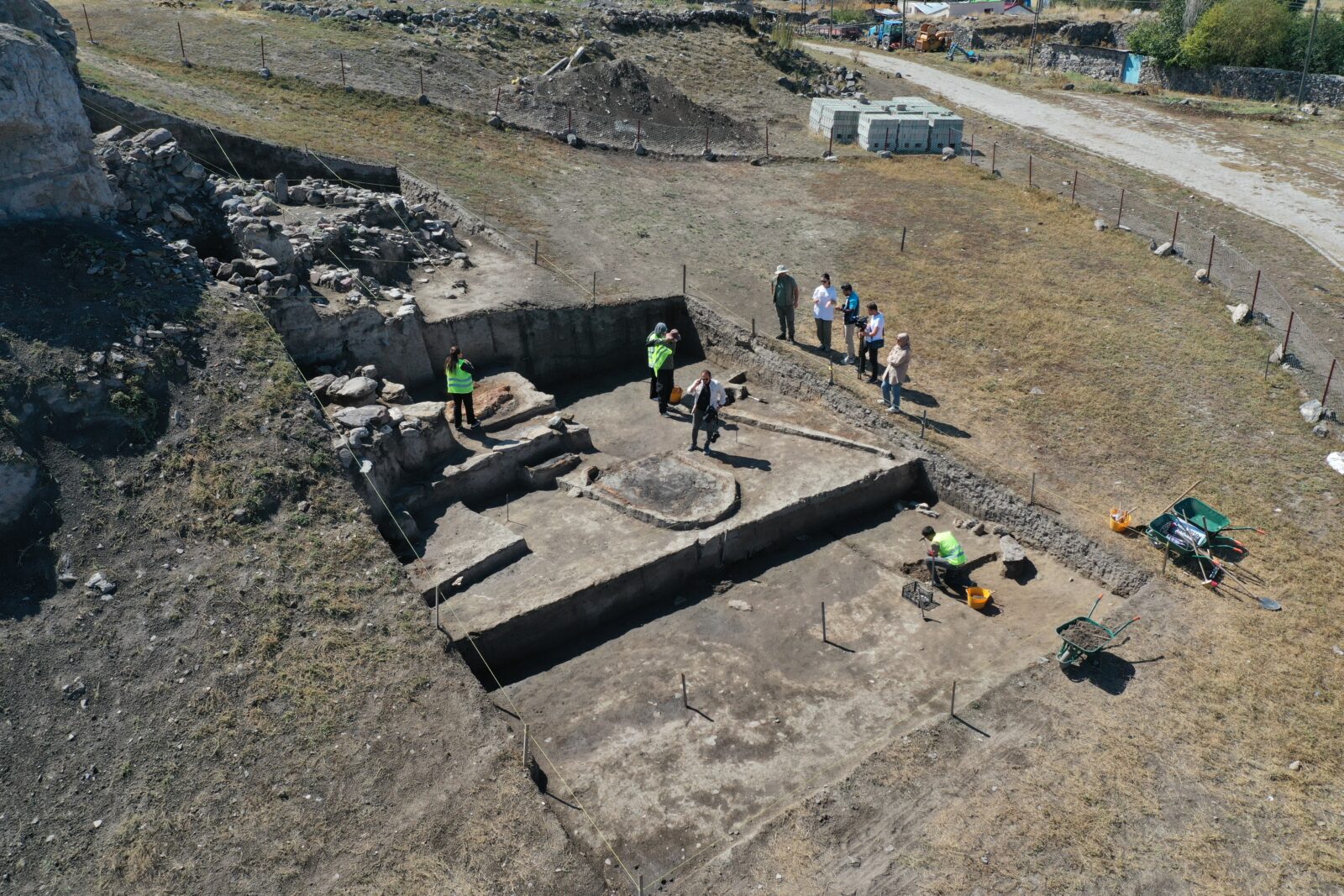7,000-year-old settlement discovered at Türkiye’s Pulur Hoyuk
 In the ongoing archaeological excavations at Pulur Hoyuk in the Aziziye district of Erzurum, traces dating back 7,000 years are being uncovered, Türkiye, September 25, 2024 (AA Photo)
In the ongoing archaeological excavations at Pulur Hoyuk in the Aziziye district of Erzurum, traces dating back 7,000 years are being uncovered, Türkiye, September 25, 2024 (AA Photo)
In the archaeological excavations at Pulur Hoyuk, located in the Aziziye district of Erzurum, Türkiye, remarkable evidence of settled life dating back 7,000 years has been uncovered.
Coordinated by the Ministry of Culture and Tourism, these excavations have revealed stone architectural remnants, fixed hearths, grain silos, kilns and pottery workshops.

The head of the excavation, associate professor Rabia Akarsu, stated, “We have identified traces of settled life in Pulur Hoyuk from 7,000 years ago during the past four years of ongoing excavations.”
The project, initiated in Omertepe neighborhood four years ago and currently supported by a presidential initiative, continues under Akarsu’s direction and the collaboration of Ataturk University’s Department of Archaeology.
The recent findings include stone structures, permanent hearths, grain storage facilities, and pottery workshops, illustrating a vibrant community life.

Uncovering ancient agricultural practices
Akarsu emphasized the significance of these discoveries, saying, “In our excavations, we have uncovered grain silos used for storing wheat and identified production kilns with two-meter-high structures built with mud blocks.”
These findings suggest that the inhabitants of Pulur Hoyuk engaged in continuous agricultural and pastoral activities rather than seasonal habitation.

Rich cultural layer of Pulur Hoyuk
Continuing her findings, Akarsu shared, “We have reached layers dating back to the Early Chalcolithic period, revealing circular stone architectural structures and a variety of pottery styles.”
She explained that these layers demonstrate a continuous occupation without cultural interruption, which is vital for understanding the region’s history.

Technological advancements and historical significance
Utilizing radiocarbon dating, the team has found that the site holds at least seven cultural layers, with the earliest dating back to 4,300 B.C. and the latest to 1,000 B.C. Akarsu noted that this uninterrupted cultural sequence indicates that the area was never abandoned by its inhabitants.

Unveiling unique artifacts at Pulur Hoyuk
The excavation team has also discovered unique artifacts, including round fixed hearths, which have been donated to the local museum. Notably, this year’s findings included a rare female figurine, dating back 7,000 years, which highlights the scarcity of such artifacts in Eastern Anatolia and Erzurum.
Akarsu concluded by stating that the Pulur Hoyuk excavations not only reveal important insights into early Anatolian civilizations but also serve as a significant gateway for various cultures throughout history. The ongoing work promises to shed more light on the cultural richness of the region, enhancing our understanding of ancient life in Erzurum.
The discoveries at Pulur Hoyuk emphasize the archaeological significance of the region and provide valuable insights into the early settled communities in Anatolia. As excavation efforts continue, they are expected to unveil further historical treasures.



